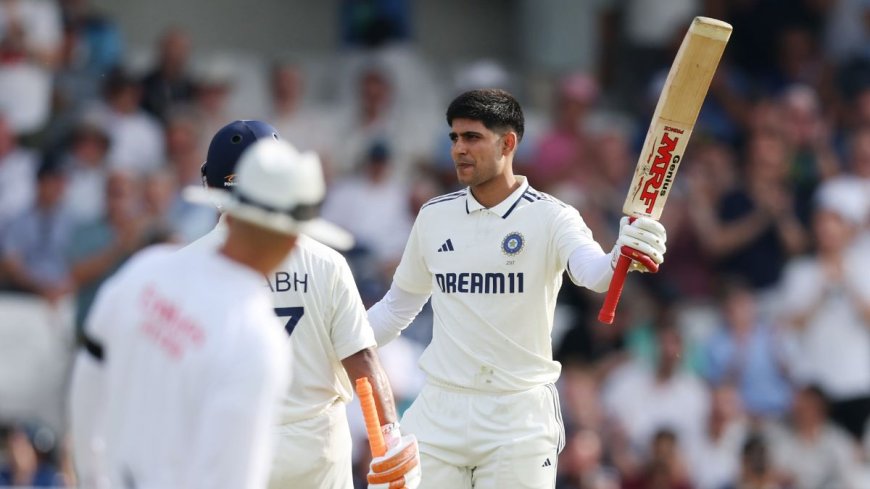Test Match Cricket Rules Simplified for Beginners

Test cricket might seem confusing if you're just starting out. The matches last five days. Teams bat twice. Some games end without a winner. Whats going on?
If you've watched a match and asked yourself, Whos winning? or Why are they still batting?, youre not alone.
This beginner-friendly guide will explain everything clearly. Well walk through how Test match cricket rules worksstep by stepusing simple language thats easy to follow.
Lets start with the basics.
What Is Test Match Cricket?
Test cricket is the longest form of international cricket. Each match is played over five days, and both teams get two innings to bat and bowl.
Its called a Test because it tests the skill, patience, and strength of the players.
Unlike shorter formats like T20 or ODI, Test cricket has no fixed limit of overs per innings.
Who Plays Test Cricket?
Only international teams with Test status from the ICC (International Cricket Council) play these matches. Some examples include:
-
India
-
Australia
-
England
-
South Africa
-
Pakistan
-
New Zealand
-
Sri Lanka
-
West Indies
-
Bangladesh
-
Afghanistan
-
Zimbabwe
Test Match Setup: How It Begins
-
Coin Toss
Captains toss a coin. The winner decides whether to bat or bowl first. -
Team Lineups
Each team has 11 players: batters, bowlers, wicketkeeper, and all-rounders. -
Playing Days
Matches are played over 5 days, with 3 sessions each day:-
Morning
-
Afternoon
-
Evening
-
How Test Matches Work (Step-by-Step)
-
Day 1 starts: Team A bats first after the toss.
-
Team A completes its first innings (all out or declaration).
-
Team B bats its first innings.
-
Second innings begin: Team A bats again.
-
Team B bats again, chasing a target set by Team A.
Whoever scores more and dismisses the other side twice wins.
How to Win a Test Match
? Win: Your team scores more and bowls out the other team twice.
? Draw: Time runs out before the match finishes.
? Tie: Both teams score the same. Extremely rare.
What Is an Innings?
An innings is a teams turn to bat. In Test cricket:
-
Each team gets two innings.
-
An innings ends when:
-
10 players are out
-
The captain declares
-
The target is reached
-
What Does "All Out" Mean?
All out means 10 out of 11 players have been dismissed. The innings ends, and the other team comes in to bat.
How Batting and Bowling Work
-
The team batting tries to score runs.
-
The fielding team bowls and tries to get 10 players out.
-
Bowlers deliver 6 legal balls per over.
-
After a bowler finishes an over, another bowler takes over.
Types of Dismissals in Test Cricket
A batter can be out in these ways:
-
Bowled Ball hits the stumps
-
Caught Ball caught before it hits the ground
-
LBW Ball hits leg in front of stumps
-
Run Out Fielder breaks stumps while batter is out of the crease
-
Stumped Wicketkeeper removes bails while batter is outside the crease
What Is a Declaration?
The captain can end the teams innings before all players are out. This is a tactic to give their team more time to bowl out the other side.
The Follow-On Rule
If Team B scores 200 or more runs fewer than Team A in the first innings, Team A can force them to bat again straight away. This is called enforcing the follow-on.
It helps speed up the game when time is running out.
New Ball Rule
-
After 80 overs, the fielding team can take a new ball.
-
A newer ball bounces more and helps bowlers.
What Happens in a Draw?
If time runs out and both teams havent finished their two innings, the match is called a draw. Nobody wins or loses.
This is common in Test cricket.
Day-Night Test Matches
These are Test matches played under floodlights using a pink ball.
Why pink? Because red is hard to see under lights.
These games usually start in the afternoon and finish at night.
Playing Conditions and Breaks
-
Play Time: 6 hours per day
-
Lunch Break: 40 minutes
-
Tea Break: 20 minutes
-
Weather Delays: Can reduce play time
-
Bad Light: Stops play if visibility is poor
Real Example: The Ashes England vs Australia
In the 2019 Headingley Test, England chased 359 runs to win.
Ben Stokes scored 135 not out, and England won by just 1 wicket.
The game lasted all five days and is now a Test classic.
Key Test Match Rules Recap (Quick List)
-
Matches last up to 5 days
-
Each team bats twice
-
No limit on overs per innings
-
A team needs to dismiss the other side twice to win
-
Declarations and follow-ons are tactical tools
-
New ball available after 80 overs
-
Match can end in win, draw, or tie
Final Thoughts
Test match cricket isnt just about scoring runs. Its a game of tactics, timing, and control. Now that you know the rules, youll enjoy it even more. Watch a full days play and notice how momentum shifts across sessions.
If this helped you understand the game, share it with someone learning cricket. Got questions? Leave a comment below and lets chat cricket.
FAQs
What is Test cricket?
Test cricket is a 5-day match where each team bats twice and aims to get the other team out twice.
How many overs are in a Test match?
Theres no total limit. Around 450 overs may be bowled across 5 days.
What happens if it rains?
Lost time is added later, but if not enough time is left, it may end as a draw.
What is the follow-on rule?
If Team B trails by 200+ runs, Team A can make them bat again immediately.
What does a draw mean in cricket?
A draw means time ran out before the match could finish.
Do all players bat in a Test match?
Up to 10 players bat, unless theres a declaration or the target is reached early.
How is Test cricket different from T20?
Test cricket is longer and more tactical. T20 is fast, only 20 overs per team.
Why do they wear white?
White clothing is traditional and helps reflect heat during long playing hours.
Is there a winner in every Test match?
Not always. Many Tests end in draws.
What is the pink ball for?
Its used in day-night Tests because its easier to see under lights.



































